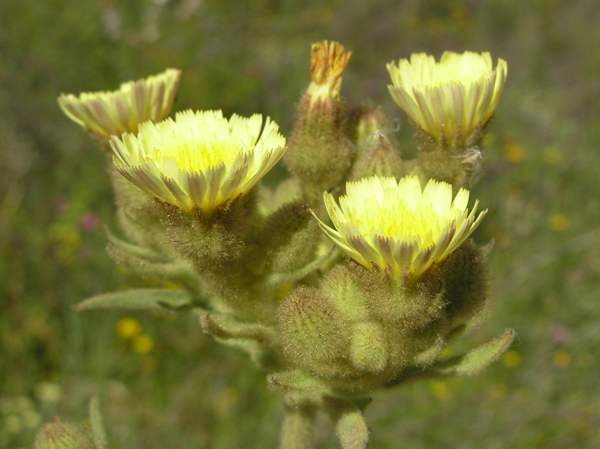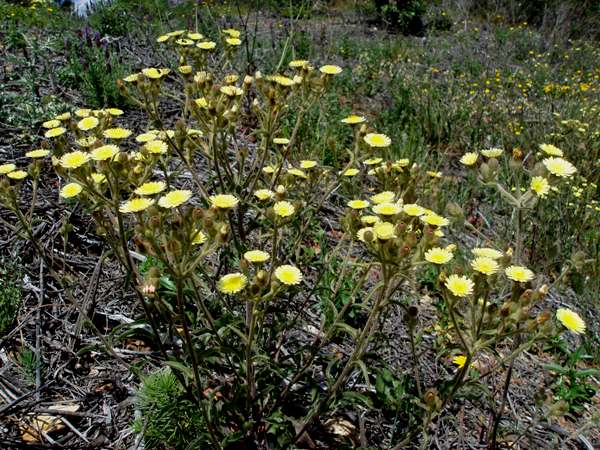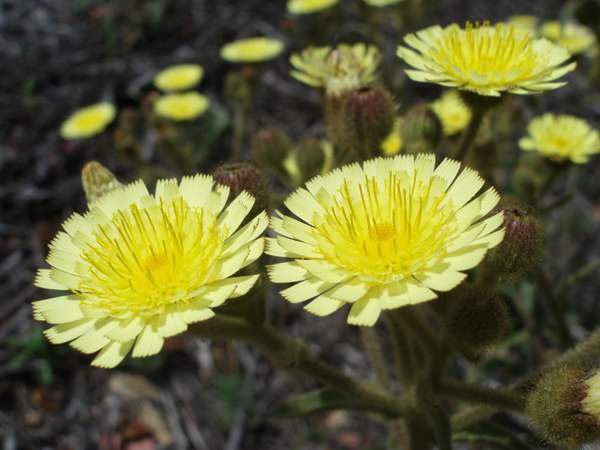Andryala integrifolia - Andryala
Phylum: Magnoliophyta - Class: Equisetopsida - Order: Asterales - Family: Asteraceae

The distinctive colour and form of its flower heads make Andryala instantly recognisable... provided it is in bloom.
Description
Unlike other daisy-like flowers, plants of the genus Andryala have large 'petals' on all florets and not just those on the periphery flower head. The plant is extremely hairy and has barrel-shaped buds surrounded with a neatly-arranged single row of hairy bracts.

Growing to between 30 and 75cm in height with branching stems covered in dense, soft white down that gives an overall whitish appearance to the plant, Andryala integrifolia has alternate lanceolate hairy leaves that are often corrugated (with wrinkled wavy margins).
The flowers are hermaphrodite (posessing both male and female reproductive organs), and they are a delicate lemon yellow. Flowers are grouped into corymbs (loose clusters) of typically three to nine composite heads, each head being in the range 1.5 to 8cm across, but most commonly between 2.5 and 5cm across.
Distribution
This wildflower is seen throughout the Mediterranean region. Well known in the Iberian Peninsula, where it is both widespread and common, Andryala integrifolia can be found from north Africa as far east as Greece, Sicily and Italy.

Habitat
This lovely wildflower tends to frequent rather sandy or rocky ground, but it can also be found on heaths, in abandoned farmland, and on some stony roadside verges.
Blooming Times
In the Mediterranean region where it is native, Andryala blooms from April to July.
Uses
A toxic latex within this plant contains hydrogen cyanide, and so no parts of Andryala should ever be eaten.
Etymology
The origin of the genus name Andryala is obscure, but the specific epithet integrifolia is very straightforward: it refers to the fact that the leaves are entire (not divided or lobed).
The Andryala plants shown on this page were photographed in the Algarve, Portugal, during May.

